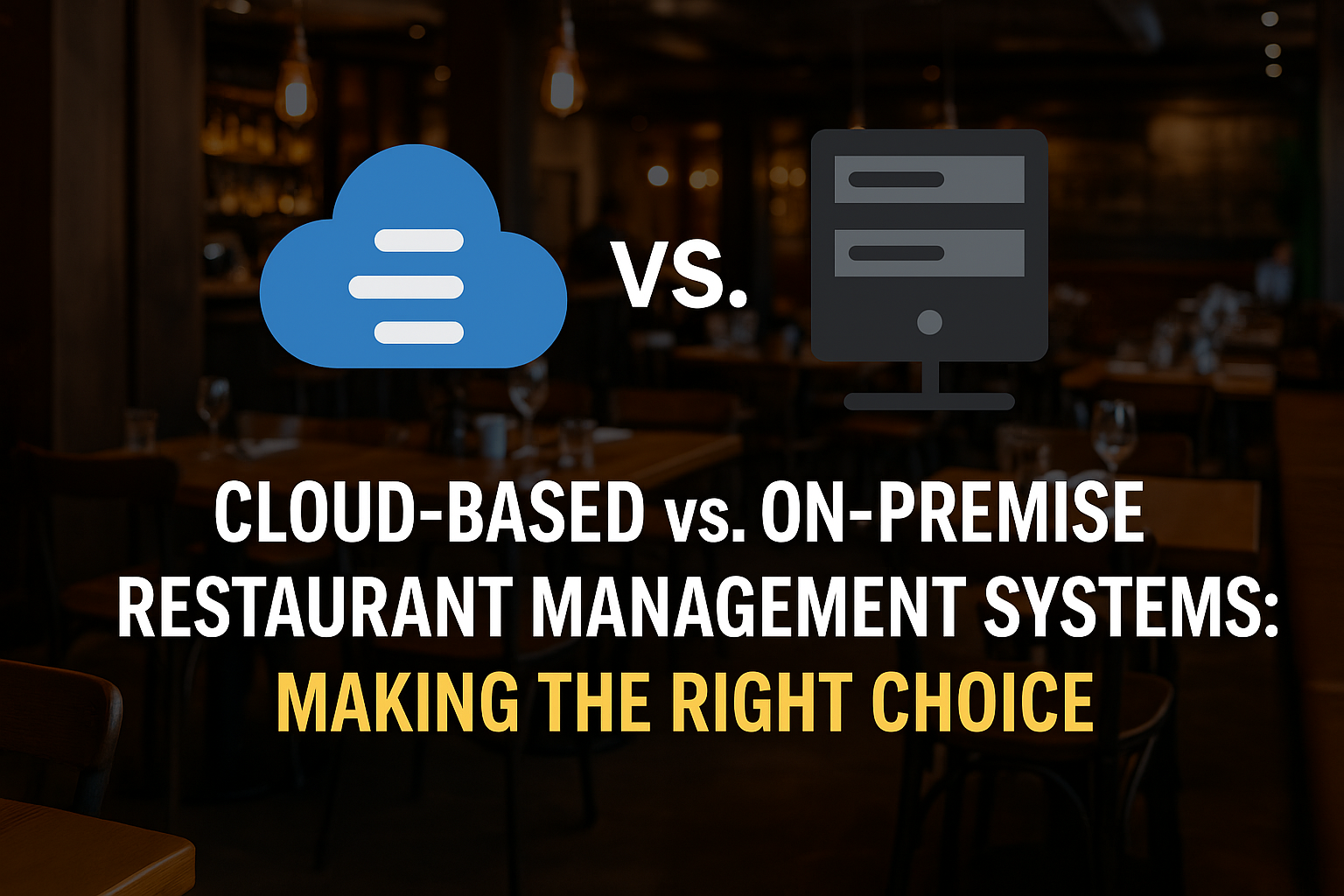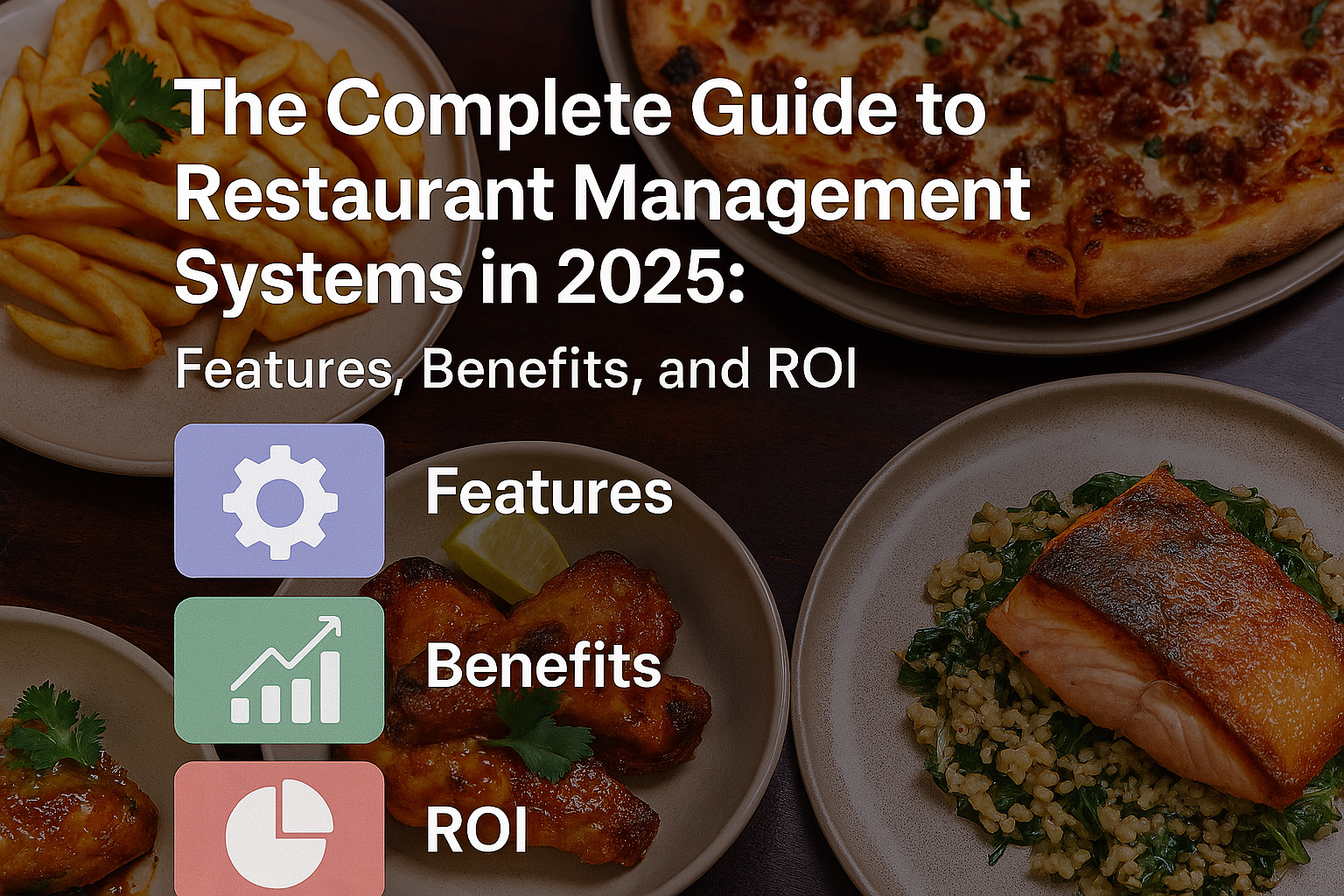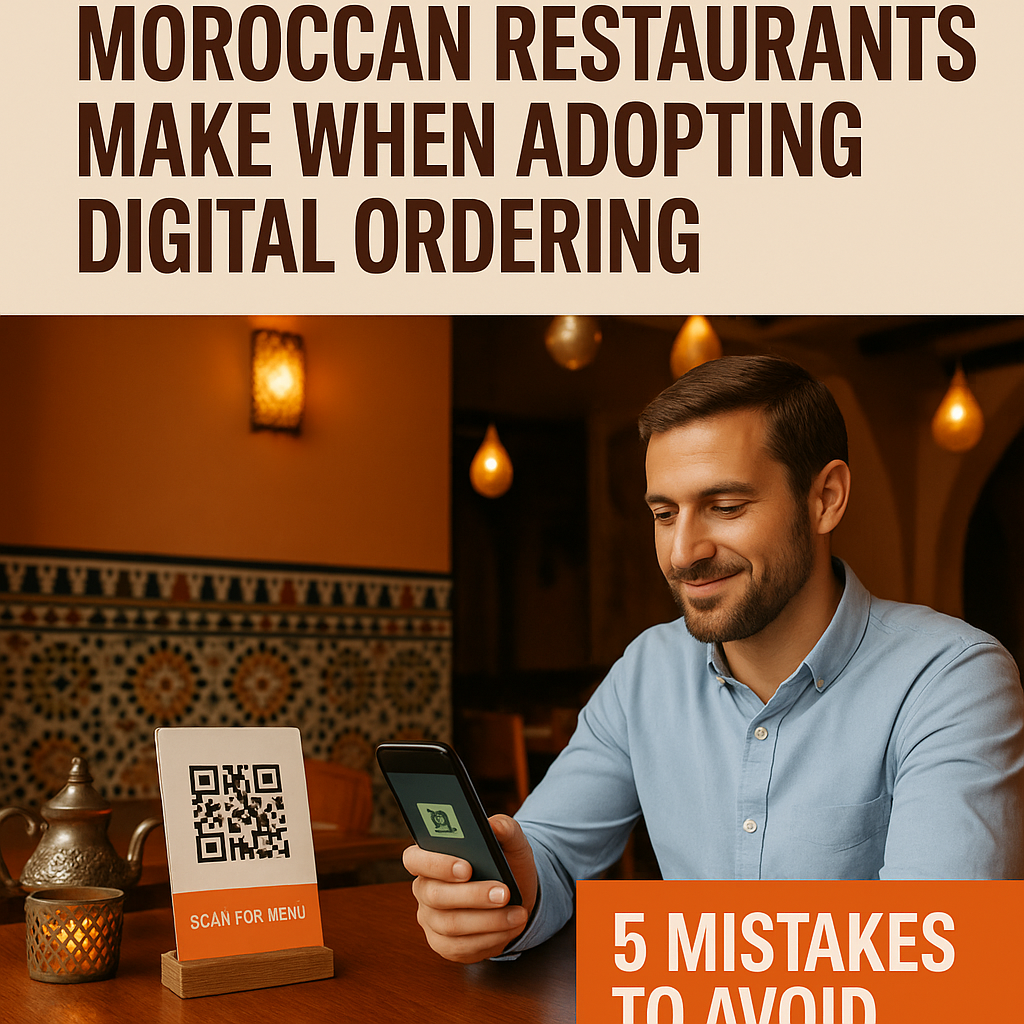In today's competitive restaurant industry, implementing the right management system can be the difference between streamlined operations and daily chaos. Restaurant owners face a critical decision when selecting their technology infrastructure: should they opt for a cloud-based solution or stick with traditional on-premise systems? This comprehensive guide explores both options to help you make an informed decision that aligns with your restaurant's specific needs and future growth plans.
What are Cloud-Based Restaurant Management Systems?
Cloud-based restaurant management systems operate on remote servers accessed via the internet. Rather than installing software directly on your restaurant's computers, these solutions store data and run applications in the cloud, allowing for access from anywhere with an internet connection.
Key Features and Benefits
- Accessibility: Access your system from any device with internet connectivity, enabling remote management and monitoring
- Lower Initial Investment: Eliminate the need for expensive server hardware and reduce upfront costs
- Automatic Updates: Receive software updates automatically without disrupting operations
- Scalability: Easily scale resources up or down based on business needs without hardware changes
- Data Backup: Benefit from automatic data backups and disaster recovery solutions
Popular Cloud-Based Providers
Leading cloud-based restaurant management providers include Toast, Lightspeed Restaurant, Square for Restaurants, and TouchBistro. These platforms offer comprehensive features like POS functionality, inventory management, staff scheduling, and customer relationship management tools in integrated packages.
What are On-Premise Restaurant Management Systems?
On-premise systems involve installing software directly on your restaurant's local servers and computers. All data is stored on-site, and the system operates within your physical location's network infrastructure.
Key Features and Benefits
- Complete Data Control: Maintain full control over your business data and its security
- One-Time Licensing: Pay once for software licenses rather than ongoing subscription fees
- Customization: Enjoy extensive customization options to match specific operational needs
- Operation Without Internet: Continue operations even during internet outages
- Long-Term Cost Efficiency: Potentially save money over time with one-time purchases versus recurring subscriptions
Ideal Scenarios for On-Premise Systems
On-premise solutions often work best for establishments with:
- Reliable IT staff or support
- Concerns about internet reliability
- Strict data privacy requirements
- Highly specific customization needs
- Single-location operations with stable processes
Key Comparison Points
Cost Structure
Cloud-Based:
- Lower upfront costs (minimal hardware requirements)
- Predictable monthly or annual subscription fees
- Included maintenance and support costs
On-Premise:
- Higher initial investment (servers, hardware, licenses)
- One-time purchase with potential upgrade fees
- Additional costs for maintenance and support
- Potential for better ROI over 5+ years
Data Security and Control
Cloud-Based:
- Provider manages security updates and compliance
- Data encrypted during transmission and storage
- Vulnerability to internet-based threats
- Limited physical control over data storage
On-Premise:
- Complete control over security measures
- No reliance on third-party security protocols
- Responsible for all security updates and compliance
- Better isolation from external threats but vulnerable to physical damage
Scalability and Flexibility
Cloud-Based:
- Easily add users, locations, or features
- Quick implementation of new modules
- Seamless multi-location management
- Pay only for resources used
On-Premise:
- Hardware limitations may restrict growth
- Adding locations requires additional infrastructure
- System upgrades may require downtime
- Hardware must be sized for peak usage
System Updates and Maintenance
Cloud-Based:
- Automatic software updates
- Minimal IT staff requirements
- Continuous feature improvements
- Provider handles server maintenance
On-Premise:
- Manual updates requiring IT expertise
- Scheduled maintenance windows
- Control over when to implement updates
- Responsibility for server health and backups
User Accessibility and Remote Management
Cloud-Based:
- Access from anywhere with internet connection
- Real-time monitoring across locations
- Mobile-friendly interfaces
- Easier staff training and onboarding
On-Premise:
- Primarily accessible on-site
- Remote access requires VPN configuration
- Consistent performance regardless of internet speed
- May require dedicated terminals
Pros and Cons Summary
Cloud-Based Systems
Pros:
- Lower barrier to entry with minimal upfront costs
- Access from anywhere with internet connection
- Automatic updates and maintenance
- Rapid deployment and implementation
- Seamless integration with online ordering and delivery platforms
Cons:
- Ongoing subscription costs
- Dependency on internet connectivity
- Potential performance issues during peak times
- Less control over data and security
- May face limitations in customization
On-Premise Systems
Pros:
- Full control over data and security
- No ongoing subscription fees
- Operation during internet outages
- Potentially lower total cost over extended periods
- Extensive customization options
Cons:
- Significant upfront investment
- Responsibility for maintenance and updates
- Limited remote accessibility
- Potential obsolescence without regular updates
- Expansion requires additional hardware investment
Frequently Asked Questions
What is the best management system for a small restaurant?
For small restaurants with limited budgets and IT resources, cloud-based systems typically offer the best value. They require minimal upfront investment, provide easy setup, and include maintenance and support. As your restaurant grows, cloud solutions can scale accordingly without significant hardware upgrades.
How do cloud systems handle data security?
Reputable cloud providers implement multiple security layers including data encryption, secure data centers, regular security audits, and compliance with industry standards like PCI DSS. Many cloud providers actually deliver better security than most small to medium restaurants could implement independently, as they have dedicated security teams and extensive resources.
Can on-premise systems be integrated with other digital tools?
Yes, many on-premise systems offer APIs and integration capabilities, though they may require additional configuration compared to cloud solutions. Integration typically requires IT expertise and may involve custom development work. When selecting an on-premise system, verify its compatibility with other essential tools like accounting software, payroll systems, and online ordering platforms.
What happens if the internet goes down with a cloud system?
Most modern cloud-based restaurant management systems offer offline modes that allow continued basic operations during internet outages. These systems typically store essential data locally and sync with the cloud once connectivity is restored. However, some advanced features like real-time inventory updates across locations may be unavailable during outages.
How to decide between cloud-based and on-premise for a multi-location restaurant?
Multi-location restaurants typically benefit more from cloud-based solutions due to their centralized management capabilities, real-time data synchronization, and scalability. Cloud systems make it easier to implement consistent procedures across locations, analyze performance comparatively, and manage menu changes simultaneously. However, restaurants with excellent IT infrastructure and consistent processes may find value in on-premise solutions, particularly if they have concerns about ongoing subscription costs.
Making the Right Choice
When deciding between cloud-based and on-premise restaurant management systems, consider these critical factors:
- Business Size and Growth Plans: Cloud systems offer greater flexibility for growing restaurants, while on-premise may work better for stable, established operations.
- Budget Constraints: Analyze both short-term affordability and long-term total cost of ownership.
- IT Resources: Honest assessment of your technical capabilities and support resources.
- Internet Reliability: Evaluate your location's connectivity quality and backup options.
- Customization Needs: Determine if you require standard features or highly specialized functionality.
- Integration Requirements: Consider how the system will work with your existing tools and processes.
- Security and Compliance Needs: Assess regulatory requirements and data protection priorities.
The vendor selection process is equally important. Look for providers with:
- Proven experience in the restaurant industry
- Comprehensive training and onboarding
- Responsive customer support
- Strong user reviews and testimonials
- Clear upgrade paths as technology evolves
Conclusion
Both cloud-based and on-premise restaurant management systems offer distinct advantages depending on your specific business context. While cloud solutions dominate the current market due to their accessibility, scalability, and lower entry barriers, on-premise systems continue to serve establishments with particular needs for control, customization, and internet independence.
The right choice ultimately depends on your restaurant's unique requirements, resources, and long-term vision. By carefully weighing the factors outlined in this guide, you can select a system that not only addresses your current operational challenges but also supports your business growth for years to come.
Ready to Transform Your Restaurant Operations?
At Ochi.ma, we understand the complexities of restaurant technology decisions. Our team of experts can help you evaluate your specific needs and recommend the ideal restaurant management solution for your business.



